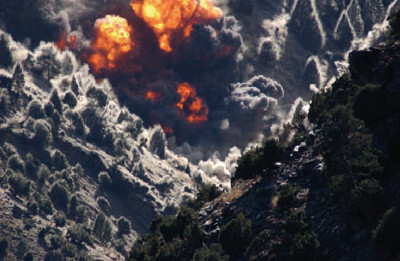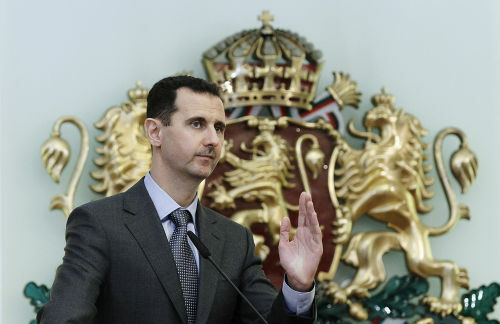21st Century: The Age of Terror
If, for some authors, the 20th century effectively began in 1914, due to the First World War; for others, the 21st century actually began in September 11, 2001, with the terrorist attack on the twin towers of the World Trade Center, in New York, and the building of the Pentagon (US Department of Defense headquarters) in Washington (US capital).
These attacks were planned and carried out by the international Islamic terrorist network, al-Qaeda, which, at the time, was commanded by the Saudi Osama bin Laden. This event revealed not only a new, larger and well-coordinated form of terrorist attack, but also a new conception of war.
Counter Terror Measures
The fact is that, after the September 11 attacks, the first decisively bellicose US move was to seek out and attack al-Qaeda training centers. At the time, al-Qaeda was headquartered in Afghanistan and received support from the Taliban, an Islamic fundamentalist group active in Pakistan and Afghanistan.
The search for bin Laden and other al-Qaeda members sparked the
afghan war, in 2002, whose most expressive moment was the Battle of Tora Bora. These retaliatory actions for the September 11, 2001 attacks shaped what the government of US President George W. Bush called war on terror.
Bombing of Tora Bora, where members of the al-Qaeda terrorist group hid
The “War on Terror” was the model of war that was most in evidence in the first decade of the 21st century. This happened, especially, because of the Iraq war (or as some authors call it, "second gulf war), which began in 2003 and only ended in 2011. The Iraq War constituted an extension of the policy of “war on terror” of the United States, but with an emphasis on authoritarian Islamic regimes that posed an international danger for containing weapons of mass destruction. This was the case of Iraq, which had chemical weapons that had been used, in the 1980s, to decimate thousands of ethnic people Kurdish. The question of the possession of this type of weapon was the main justification for the outbreak of war on Iraqi soil.
Side Effects of Counter Terror Measures
The big problem faced in Iraqi territory by American troops was not exactly the resistance of the armed forces linked to saddanHussein, but the internal wars between jihadist groups*, who were also interested in the overthrow of Saddan and control of Iraqi territory. Among these groups was a faction of the al-Qaeda. The government administration of barack obama, elected after the end of Bush's term, decided to withdraw US troops from Iraq and entrust control of the country to a provisional government. The complete withdrawal of troops took place in December 2011.
That same year, many of the outbreaks of insurrection against the provisional government began to gain more strength. In the years that followed, Iraq found itself immersed in a widespread civil war that continues to this day. One of the jihadist groups that most took advantage of this situation was the Islamic state, which we'll talk about later. Before, we need to talk a little about the call "Arab Spring”, an event that changed the situation of the Islamic world and that could be the center of countless future wars.
Importance of the Arab Spring
THE "Arab Spring" it was a succession of insurrectionary uprisings that took place in countries in North Africa and the Middle East in 2011 and 2012. When the first uprisings took place in 2011, many journalists and experts in the Islamic world said that the "Arab Spring" aimed to overthrow the dictatorships of the countries in question and establish a regime democratic.
It turns out that, over time, the massive presence of radical Islamic ideology in the rebels was verified, given that most of them are supporters of the implementation of the Sharia, Islamic law, and the jihad. This ideology penetrated these rebel groups through the Muslim brotherhood, an organization founded in the 1920s in Egypt that has been one of the biggest propagators of the ideas at the root of Islamic terrorism.
Countries like Egypt,Libya and Tunisia had their political, economic and social structure completely transformed with the Arab Spring. The risk of civil wars is imminent in these countries, which can also suffer from actions by terrorist groups, such as Syria, one of the targets of the “Arab Spring”.
THE Syria, commanded by the dictator Bashar Al-Assad, has been fighting a civil war since 2011 against several jihadist outbreaks seeking to overthrow Assad. Unlike the Iraqi case cited above, Syria did not suffer direct US interference, but some of the rebel groups operating in their territory received weapons, training and money American. The problem is that many of these rebels are mercenaries and fight for whoever offers the highest amount. One of the most powerful terrorist groups today, the Islamic state, is who benefits most from it.

Syria's dictator, Bashar Al-Assad, seeks to preserve himself in command of the country **
Do not stop now... There's more after the advertising ;)
The Uniqueness of the Islamic State
O Islamic state it stemmed from a split between the group representing al-Qaeda in Iraq and al-Qaeda's own central command. This Iraqi group also decided to operate in Syria around 2011. In Syria, there was already another group sponsored by al-Qaeda, the Al-Nusra, which led to a clash between the two projects. The leader of the Iraqi group, Abu Bakr Al-Baghdadi, raised the status of the jihadist group to the category of state, calling it the Islamic State of Iraq and Syria (or Levante, as the Syrian territory where they operate is also known), whose acronym in English is ISIS. Three years later, in August 2014, this same leader declared himself caliph of the Islamic State. From then on, the group's name was known only as Islamic State. Many Iraqi army officers, once loyal to Saddan, have come to ally themselves with Caliph Abu Bahgdadi, as investigator Patrick Cockburn points out:
“Abu Bakr al-Baghdadi began to emerge from the shadows in the summer of 2010, when he became the leader of al-Qaeda in the Iraq, after its predecessors were killed in an attack conducted by Iraqi and state troops United. Al-Qaeda in Iraq was on its toes as the Sunni rebellion, in which it had previously played a leading role, was breaking down. It was revived by the Sunni revolt in Syria in 2011 and, over the next three years, by a series of carefully planned campaigns, both in that country and in Iraq. The extent to which al-Baghgdadi was directly responsible for the military strategy and tactics of al-Qaeda in Iraq and, later, of ISIS is unknown. Former senior Iraqi army and intelligence officials, at the time of Saddan Hussein, played a central role, but they are under the general leadership of al-Bahgadadi.”[1]
In addition to being an openly terrorist group (the most emblematic case of terrorism assumed by the Islamic State was that of the November 13 attacks, in Paris) and jihadist, the Islamic State has a proposal to effectively build a state, that is, a jihadist Islamic nation based on the sharia***. This State would not be limited to the region of Iraq and Syria, but would have the objective of conquering all the territory that, between the Middle Ages and the Modern Age, belonged to the Islamic civilization.
The great risk that the Islamic State and its new form of war, which is not only conventional and terrorist, but also cultural and religious, represent for the 21st century it is the fascination they provoke in young people from all over the world, who volunteer to fight in the wars of the “caliphate” and to carry out terrorist attacks in any part of the world. Another danger, even greater, is that, if the objective of founding a State is achieved (with a health system, education, etc.), the Islamic State will be recognized as such. This is what expert Loretta Napoleoni argues:
“Regardless of how we face them, the birth of the Caliphate serves to warn us that that politicians have mistaken for a new breed of terrorism may actually be a new model of terrorism. In other words, the Islamic State can break with tradition and resolve the dilemma of terrorism by successfully creating a nation, earning for members of an armed organization the status of enemies and for civilian populations the status of citizen. Even without diplomatic recognition, the very existence of the Caliphate would lead the international community to look at terrorism with a different eye.” [2]
other conflicts
In addition to these conflicts in the Middle East and the risks posed by the Islamic State, the 21st century has also presented other sources of tension. In the sub-Saharan region of the African continent, there is civil war in Kenya and Nigeria, where a terrorist group, the Boko Haram. In the region of Caucasus, there was a Chechnya insurgency Against the Russia, which was only properly controlled in 2006. There was also a tension between Russia and Ukraine, because of the strategic region of Crimea, at the beginning of the year 2014. Gradually, many geopolitical transformations are accentuated in these regions of the world, especially in Africa, the Middle East and Eastern Europe. The foci of current wars are arranged in these regions.
*Jihadists:The expression “jihadist” comes from the term “jihad”, which means “effort” in Arabic, and originally indicated the ascesis, the effort or spiritual warfare to become a virtuous person. With the rise of Islamic fundamentalism, this term came to be identified with the “holy war against the infidels”, that is, a war against all who do not share the Islamic faith.
** Image credits: Shutterstock and Valentina Petrov
*** Sharia:Sharia, or Islamic law, is a set of legal prescriptions for the conduct of people that are based on interpretations of the Koran. Jihadist groups often misinterpret these prescriptions to commit atrocities such as the sexual enslavement of women, the hanging of homosexuals, and the beheading and crucifixion of Christians.
GRADES
[1]COCKBURN, Patrick. The Origin of the Islamic State: The Failure of the “War on Terror” and the Rise of Jihadism. São Paulo: Literary Autonomy, 2015. p 85.
[2]NAPOLEONI, Loretta. The Islamist Phoenix: The Islamic State and the Reconfiguration of the Middle East. Rio de Janeiro: Bertrand Brasil, 2015.pp. 77-78
By Me. Cláudio Fernandes
